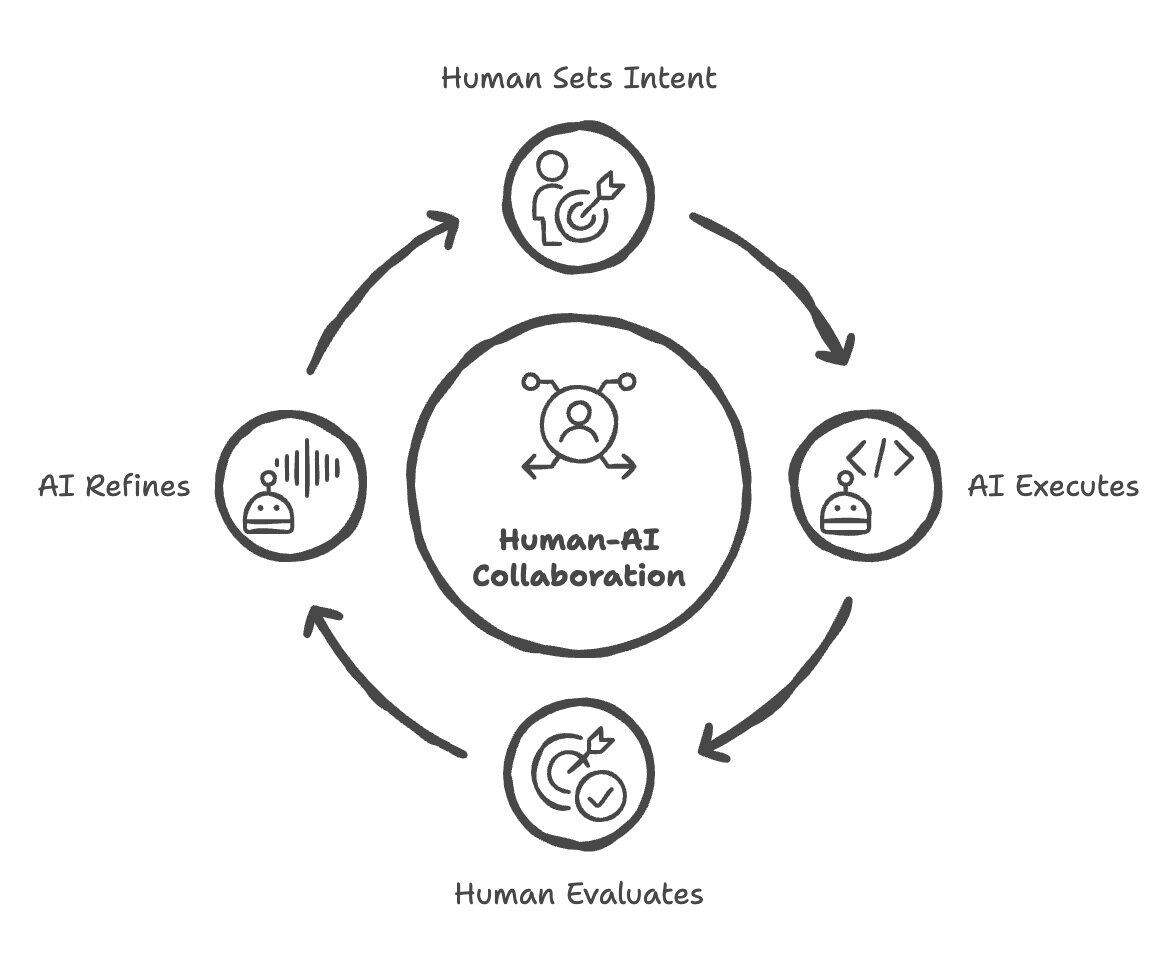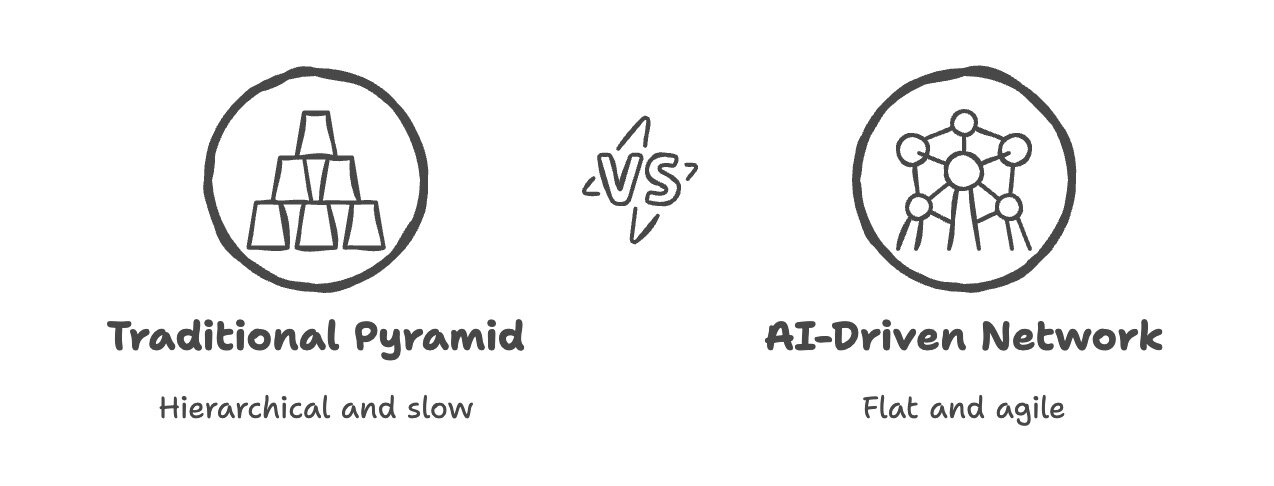

News + Thought
Vibe Coding, AI-Assisted Development, and the End of the Middle
Collins Dictionary named “vibe coding” as its Word of the Year for 2025. Source – CNN
The term (it’s actually two words) has taken off faster than the concept itself. It’s become shorthand for anything involving AI and code, which is wrong. There’s an important distinction, because not all coding involving AI is “vibe coding”.
What “Vibe Coding” Really Means
Vibe coding is the “Yay! I have no idea what’s going on, but let’s make some apps” approach. It’s playful, prompt-driven and chaotic. It’s wonderful for exploration, prototyping or proof-of-concepts, but not ideal for public/production use.
As Simon Willison described it, it’s the “fast, loose and irresponsible way of building software with AI — entirely prompt-driven, with no attention paid to how the code actually works.”
Vibe coding is creativity without accountability, and that’s fine, so long as everyone recognises it for what it is.
AI-Assisted Coding: Development with Leverage
AI-assisted coding is a different beast. It’s “let’s see if I can talk you into doing what I want — while checking your work.” The developer still owns the logic, tests, refactors and deploys; they simply move faster.
Willison proposes the term vibe engineering, which I quite like, keeping the creative spark but anchoring it in discipline. It’s development with leverage, not abdication. Transparency and accountability matter even more now that you can generate code with a prompt, because the value shifts from ‘I wrote this line’ to ‘I ensure this code works and will evolve.’
The most effective implementations of this are what are now being referred to as human-in-the-loop. In the context of agentic AI systems, autonomous agents are entrusted with handling complex tasks, while a human retains the authority to oversee, direct and evaluate the processes. The objective is not the removal of individuals, but rather their placement in an environment where judgment and creativity are paramount.
From ‘Doers’ to ‘Directors’
This shift mirrors a broader reorganisation of work itself. There’s an emerging divide between directors and doers:
- Directors initiate and complete the loop. They frame the problem, direct the process, and decide when it’s done.
- Doers execute the middle.
AI thrives in that middle ground(a literal no-man’s land 🙂). It’s superb at turning intent into output once given direction. That means our value increasingly sits at the edges: starting things and finishing them; defining purpose, judging outcomes, making calls.
In the industrial age, most people were doers, but the digital-AI age rewards directors. The people who can conduct work rather than simply perform it. Younger generations instinctively grasp this. They see AI not as a threat to jobs but as leverage. As a way to extend what one person can build or manage.
Flattening Hierarchies and Exposing Excellence
As AI fills the executional middle, hierarchies flatten. Layers of approval and process start to look like drag. Organisations built on the logic of the factory (siloed departments, sequential hand-offs, dare I say waterfall) are finding that structure obsolete. What’s emerging instead is leaner, cross-functional work: small teams directing fleets of digital agents and automated systems.
This compression has an unintended side-effect: it exposes excellence. When “good enough” can be generated by anyone, true craft becomes blindingly visible. For agencies and technical teams, this is decisive. AI won’t eliminate you; it will reveal you. If your work is formulaic, automation will make that obvious. If it’s intelligent, integrated and beautifully executed, AI becomes an amplifier.
The Broader Economic Shift
Zooming out, this is part of a much older pattern. Every technological revolution resets the basis of value:
- The land economy of the feudal era gave way to industrial capitalism built on labour and capital.
- Now, that industrial model (wages, hierarchy, average pay for average output) is giving way to a new enterprise economy.
In this model, income and influence shift from fixed wages to performance and ownership. The traditional “job” is fragmenting into plural projects, creative micro-ventures, and digital assets. Many will move from employee to operator, from department to squad, from wage to outcome.
For some, this feels destabilising. For others, it’s liberation. A chance to direct rather than repeat.
The End of the Middle
Put simply:
- AI eats the middle.
- It automates the average.
- It rewards initiation, curation and completion.
That applies to code, commerce, and creativity alike. “Vibe coding” will always have a place for discovery and play. But AI-assisted coding, and the director mindset behind it, is where enduring value lives.
The Takeaway
The middle ground, where competence once hid, is disappearing. In its place stands a sharper divide: between those who use AI to automate, and those who use it to amplify.
Client expectations are shifting. They expect insight, speed, and craft. If you treat AI like a hocus pocus generator, you may meet speed but lose trust.
Fun has its place. Production needs rigour.
Leadership in this new age belongs to those who can start, steer and finish, not just do.
Frequently Asked Questions
What is vibe coding?
Vibe coding is a fast, prompt-driven way of building software with AI. It’s useful for prototypes and experiments but not suitable for production because the code isn’t fully reviewed or understood.
How is AI-assisted coding different?
AI-assisted coding keeps developers in control. It uses the same tools, but the output is reviewed, tested and refined, making it structured and reliable rather than chaotic.
What is vibe engineering?
Vibe engineering is a disciplined form of AI-assisted coding. It combines creative prompting with proper engineering practices like testing, documentation and review.
What does human-in-the-loop AI mean?
Human-in-the-loop AI systems allow agents to perform tasks but keep a human responsible for direction, evaluation and final decisions. It’s collaboration, not hands-off automation.
Will AI replace developers?
No. AI automates the executional middle of the workflow, but developers are still needed to set direction, make decisions and ensure long-term quality.
Why does AI flatten hierarchies?
AI speeds up execution, reducing the need for multiple layers of process and approval. Teams become leaner and more focused on direction and decision-making.
How does AI expose excellence?
When anyone can generate “good enough” work with AI, real craft and good judgement stand out more clearly. AI makes quality more visible, not less.
What skills matter most now?
Skills that can’t be automated: framing problems, directing AI systems, reviewing output and making final decisions.
Is AI changing traditional jobs?
Yes. Roles are shifting from task-based “doing” to outcome-based “directing”, giving people more leverage and flexibility in their work.


